A visit to the magical town of Valcourt, Quebec, has always been a treat — even during my 24-year career with Bombardier and its Minnesota-based distributor. But the trips to one of the birthplaces of snowmobiling have occurred with decreasing regularity since I left the company in 1992.
That made an adventure this past February to participate in the 50th anniversary of Ski-Doo snowmobiles ever more special — and somewhat of a family reunion for me.
While Joseph-Armand Bombardier had designed and produced many successful snow and soft terrain vehicles prior to the 1950s, it was the 1959 Ski-Doo snowmobile that made his company a world-recognized enterprise.
I spent the majority of my career with Ski-Doo — starting in 1968 with Halvorson Equipment, an early Ski-Doo distributor in Duluth, Minnesota, and then with Bombardier Corp., also based in Duluth. I made many trips to Valcourt during my years with Ski-Doo and was thrilled at the opportunity to get back and, hopefully, see many old friends there.
I wasn’t disappointed; the reunions were wonderful. I had visited the Musée J. Armand Bombardier in Valcourt many times but each time I walk into it I am amazed by the examples of creativity and engineering of the J. Armand. A trip for me to the museum brings back more than 40 years of memories. I worked with Roy Halvorson who had personally met with J. Armand Bombardier and set up a sales distributorship for Bombardier’s equipment in Duluth.
As I strolled around the museum, all those memories came pouring back, but the story of the company, and the trail to Ski-Doo snowmobiles, goes back much further.

The Path To “Ski-Dooing”
J.-Armand Bombardier was a mechanic and opened a repair shop for tractors and cars in Valcourt in 1926 after years of study and work in Montreal. His small shop, Garage Bombardier, prospered and, on the side, he fiddled with one- and two-person snow machines that had long interested him.
Armand’s original shop is now integrated into the sprawling museum facility that bears his name and greets you when you arrive.
In January of 1934, Yvon, the 2-year-old, second-born son of Armand and his wife, Yvonne, developed appendicitis, complicated by peritonitis. The nearest hospital was more than 20 miles away in Sherbrooke, Quebec, but all the roads were snowed in. An unfinished over-snow vehicle sat in Armand’s garage as his young son passed away, unable to get to medical treatment.
This tragic loss helped focus Armand on finding a solution to the winter isolation of the Snowbelt. He redirected his design efforts, setting aside the one- and two-passenger machines in favor of designs that could transport more than two passengers.
Bombardier developed his rubber-covered drive sprocket in 1935 — a design still used today — leading to his development of many successful track drive systems and to his financial success. It would be just one of more than 40 patents granted him during his lifetime.
In 1935 Armand built the first “production” Bombardier vehicle. It was made using Ford and Chevrolet components and his own track, sprocket, skis, steering and suspension systems. Eventually eight vehicles were sold, and Bombardier built at least 25 the following winter. The original 1935 production Bombardier is on display at the museum.
In 1936, Bombardier introduced his B7, the “B” standing for Bombardier and the “7” for the number of passengers it could carry. The machine quickly became popular and Bombardier’s factory could hardly keep up with orders. The B7’s suspension, body design and ability in snow evolved rapidly, expanding to the 12-passenger B12 model.
In early 1937, Armand closed his repair shop and threw himself and his employees into producing snowmobiles. He named the new enterprise L’Auto-Neige Bombardier.
During World War II, Armand experimented with many new tracked vehicle designs and learned a lot about working not only in snow but in soft terrain conditions. The B12 was widened and lengthened and could seat 25 school children. The C18 snow-bus was a big hit in 1945, for the roads in Canada were still not being plowed.
The winter of 1947-48 was without snow in Quebec and sales of Bombardier’s snow vehicles plummeted. Bombardier’s sales were given another beating when provincial and local laws brought snowplowing to rural Quebec, beginning in the spring of 1947.
Armand’s brother, Théophile, had purchased a Ferguson tractor that proved to be lousy in soft, muddy terrain. Armand was on vacation at the time and another brother, Gérard, took on the challenge to improve the vehicle’s traction. He added a third transverse axle with two wheels and wrapped tracks around the tractor’s rear wheels and the new, mid-mounted wheels, effectively converting the tractor into a half-track design.
When Armand returned, he and Gérard refined the new design, and soon the company was selling the conversion as the Tractor Tracking Attachment (TTA) to owners of farm machinery – it helped save the company.
Armand knew that snowplowing was bringing an end to the demad for the large snowmobile bus. He was also growing weary of simply building the TTA attachment for other companies’ machines. In 1950 Armand began designing track-driven, front-engined vehicles for the oil exploration industry, which led to the development of the Muskeg tractor in 1953 and the J5 tractor in 1954-55. These were mid-engine, twin tracked machines that were economical, light, fast and highly maneuverable.
Meanwhile, Roy Halvorson in Duluth, Minnesota, owned a company that processed Christmas trees from the peat bogs and muskeg swamps of northern Minnesota and Canada. He had heard of the Bombardier Muskeg tractor in 1955 and went to North Dakota to watch one operate. He was thoroughly impressed and knew it was just the machine he needed and ordered one from an Ontario dealer the next year.
The machine worked even better than Roy had hoped and he quickly saw the application and saleability of the Muskeg tractor in many areas. Roy went to Valcourt to try to get a distributorship for the versatile machine. Roy found Armand on the roof of his factory, helping pour concrete for an extension of the plant. Roy spoke no French and Armand’s English was spotty. Armand directed Roy to his brother, Alphonse-Raymond, who was able to communicate fluently in English. The two businessmen hit it off and Roy returned to Duluth with a Bombardier distributorship, called Halvorson Forest Equipment.
Bombardier had a handful of dealers sprinkled around Canada, plus Duke Elliot and Dee Hutchins in New York, and Timberland Equipment in New Hampshire. Halvorson was the first Midwestern U.S. distributor and later set up other distributors in the western U.S., Alaska and western Canada.
Bombardier’s success came not only from his brilliant vehicle designs, but from his ability to design and build tooling and equipment to make his machines quickly and economically. Among other plants he established in the Valcourt area to supply his factory was a rubber plant in Kingsbury, Quebec. Bombardier even designed all new ways of creating endless track bands for use on his tractors. In 1953, Armand incorporated the new business as Rockland Accessories. Armand gave the majority of his company’s shares to his eldest son, Germain, who became the company president and what we now know as Camoplast.
Soon Germain was making all the rubber parts for Bombardier’s factory. Like other family members, Germain was a creative mechanic. While Armand was thinking about small snowmobiles, Germain had patented an endless rubber track for ski trail grooming machines. Armand wanted to build a smaller machine than Germain’s, and built three concept sleds in 1957-58.
Flashback
Some 15 years ago, I was working on my first book about Ski-Doo, “Illustrated Ski-Doo Snowmobile Buyer’s Guide.” In doing research, I interviewed a man in Valcourt who worked with Armand during the development of those prototype machines, Omer Nadeau. Omer ended up working at Bombardier for more than 50 years.
As I stood in the museum during the anniversary celebration talking with Pierre Brazeau, a man I had long worked with in the service department, I saw a familiar face walk by. I asked Pierre if that was Omer Nadeau. Pierre said yes and called Omer over to us. Omer speaks no English and I speak no French. Fortunately, Pierre is fluent in both and the three of us had a great time catching up. It was wonderful to have one of the actual mechanics who helped create the original Ski-Doo at the 50th anniversary of Ski-Doo.
Single Passenger Sleds Take Off
When Armand had accepted the final, plywood prototype he set about duplicating the design in all steel. Two Ski-Doos, then called Ski-Dogs, were built in 1958, which would have been 1959 models. One of those original Ski-Doos is on display in the museum. The other original was delivered and given to a friend of Armand’s, Father Maurice Ouimet. Ouimet was an Oblate priest and missionary in northern Ontario. He worked with the natives of the area and offered Armand an opportunity to make a gift to his friend and get a lot of “Joe average” testing done.
The original transmission on the first Ski-Doos consisted of a centrifugal clutch that connected the engine to a two-speed planetary transmission mounted on the top of the chaincase. A manual lever at the top of the chaincase was pulled down to engage low gear. The engine speed was then increased to engage the centrifugal clutch and away you went. After you gained enough speed, the rider simply released the lever and sped away in high gear.
There were a few small snowmobiles crawling around the Snowbelt prior to Ski-Doo’s appearance on the scene. The first to use a centrifugally governed, variable diameter drive and driven pulley system was the 1951 Eliason, built by FWD Company in Kitchner, Ontario. The machine utilized a 6 hp Salsbury engine complete with a Salsbury clutch. Bombardier must have heard of this machine, studied the automatic drive system and designed his own version it. All the K 60, 1960 model Ski-Doos were equipped with Bombardier’s version of the centrifugally governed, variable ratio pulleys. This made the new Ski-Doo completely automatic.
Ski-Doo was off and running with the introduction of the K 60. Ski-Doo sales grew rapidly in those early years. The market could have absorbed more Ski-Doos then, but Armand’s plans to grow were based on sufficient profits to cover any expansion of the plant and tooling. On February 18, 1964, Armand died of cancer. He was 56 years old.
Germain Bombardier took over as president of L’Auto-Neige Bombardier but found he liked better designing machines and components over running a large corporation. He also had his hands full with Rockland Accessories.
Armand’s second daughter, Claire, married an accountant from nearby Sherbrooke, Quebec, Laurent Beaudoin. Laurent was working for an accounting firm there when his father-in-law asked him to join L’Auto-Neige Bombardier as comptroller. As the family discussed the uncomfortable feelings Germain was having as the company’s president, Laurent Beaudoin was selected as president and is still the current CEO of BRP and Chairman and CEO of Bombardier Inc.
Introduction To Valcourt
I joined Halvorson Equipment Company in the summer of 1968. In the fall of 1968, Mr. Beaudoin invited mechanics from Ski-Doo distributors who sponsored race teams to come to Valcourt to work with the 1969 Ski-Doos that were to be used for racing. George Hayes and myself represented Halvorson Equipment Co. from Duluth, Gary Scott and Mike Cutler represented Monty’s Bombardier from Idaho, and Bob Fortin came from Timberland Equipment in New Hampshire. We were joined by Jean-Paul Samson and Jean-Guy Talbot in the race shop in Valcourt.
Jean-Paul had created the first 494 Ski-Doo and Jean-Guy would work with Bombardier’s race team for years and later create wonderful sleds like the T’NT R/V. For two weeks we had a chance to modify the new Ski-Doos and help prepare for the coming racing season. For me, it was just like going back to school!
At the end of each day, Laurent, usually accompanied by his son, Pierre, would stop by the shop to see the progress we were making. We would haul out our best examples and Laurent himself would take them out on the test track. His young son would then take a spin around the track on what were some of the hottest race sleds of the era. I will admit, Pierre was wisely prudent with the throttle. Pierre is now president and CEO of Bombardier Aerospace and executive vice president of Bombardier Inc.
Laurent attended the 50th celebration at the museum and I had a chance to greet him and swap a few memories. Armand’s eldest daughter, Janine Bombardier, gave the opening remarks at the museum’s temporary exhibit entitled “50 Years of Ski-Doo.”
For me, Ski-Doo’s 50th anniversary celebration was an incredible reunion and a wonderful trip down memory lane.

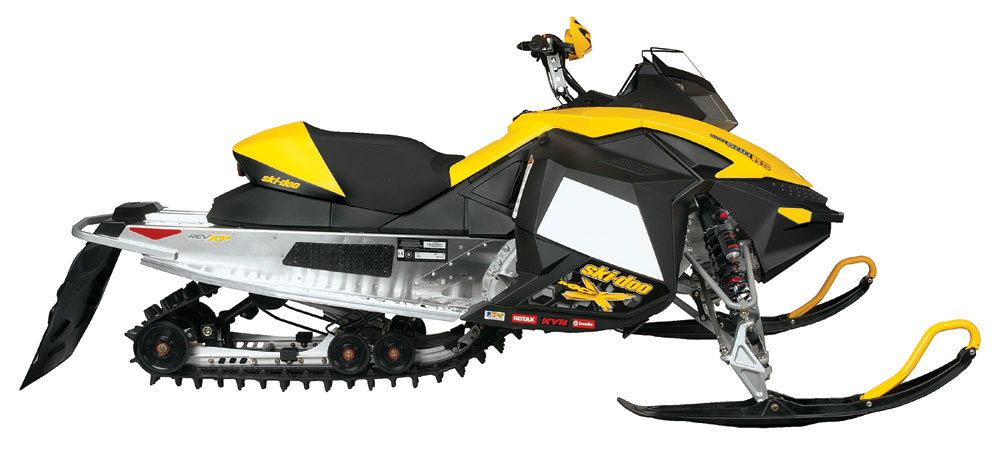
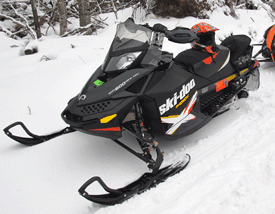
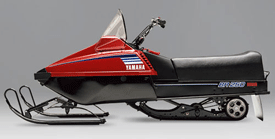
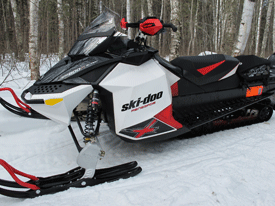
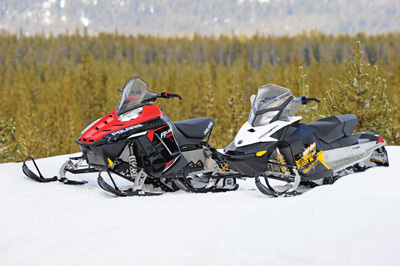

Hi Folks,
As the historian for the lancaster Snow Drifters, I am searching for any Ski-doo racer ridden by the great Bob Fortin of Timberland Machines Inc. He was their team captain and one of finest racers of his generation. A Bob Fortin Ski-doo Blizzard is to us, the Holy Grail!
Hi Folks,
The Lancaster Snow Drifters are very interested in any Ski-doo Blizzard Raced by the Great Bob Fortin of Timberland Machines Inc. Bob was one of the finest riders of his generation. A Bob Fortin racer to us, is the Holy Grail! Thanks, Ed Rosebrook